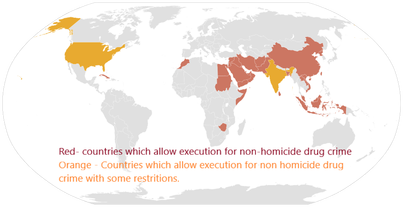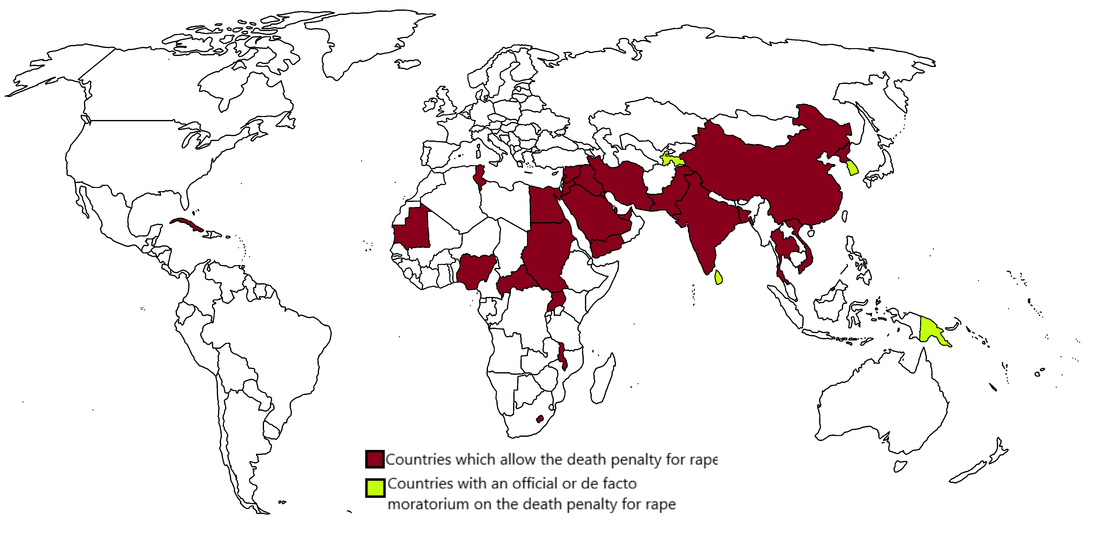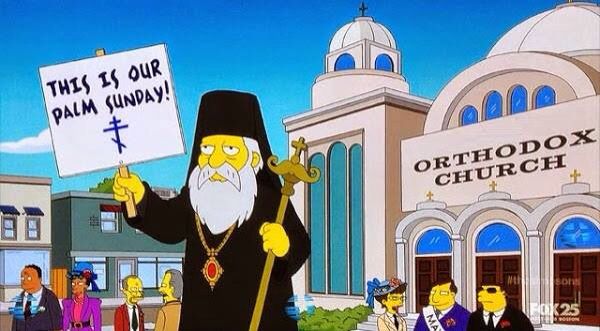Dorothy Day Caucus of the American Solidarity Party A Revolution of the Heart
Menu
 Happy Sunday! This post is going to go to a really dark place, I’m not going to get graphic, but be forewarned, the question before the Courts in Kennedy v. Louisiana is whether the death penalty constitutes cruel and unusual punishment for a child rapist. If you read the Court’s decision it does get into the evidence, but just trust me here: evidence showed Patrick Kennedy had violently raped his eight-year-old stepdaughter. Louisiana state statue made the death penalty an allowable punishment for rape of a child under twelve years old, and Patrick Kennedy was sentenced to death but appealed to the Supreme Court arguing that the death penalty was cruel and unusual punishment in the case of crimes other than murder or a crime against society as a whole, like treason. The Court agreed. Patrick Kennedy, monster, was not executed by the State of Louisiana. The opinion of the Court was issued by Justice Anthony Kennedy. The Court’s reasoning was two-pronged. Firstly, the court looked at “public standards of decency” as evidenced by state statutes regarding the imposition of capital punishment in child rape cases. The court concluded from this statute that, the current moral consensus was that the death penalty was not an appropriate punishment for rape of a young child. Secondly, the court reasoned that in the cases of crimes against individuals, capital punishment ought to be reserved for crimes wherein an individual’s life is taken. The opinion states that homicides are unique in the degree of depravity, and the fact that the victim will never be able to recover to any extent. The decision was definitely contentious, Justice Alito wrote the dissent, in this 5-4 decision. The four dissenting judges believed that the majority opinion was wrong on both prongs of their rationale. Firstly, the dissenting judges believed that the reason that state statute did not more often provide for the imposition of the death penalty in child rape cases was not that there was a public consensus that the death penalty was cruel and unusual in these cases. Rather, the dissenting opinion indicated that many state legislatures believed that the Supreme Court had previously indicated their intent to limit capital punishment in non-homicide crimes when they ruled that the death penalty was inappropriate in the case of the rape of an adult woman. Secondly, the dissent indicated that the depravity of homicides was not unique, using the contrast of a homicide in the context of a failed robbery as opposed to the torture and rape of multiple children to illustrate their point. The dissent also indicates that since irreparable harm is often done to the rape victim, especially the child victim of rape, the idea that one can truly recover from that action might not be true. Moreover, the majority mentions that crimes against society such as treason, or drug kingpin activity are eligible for the death penalty; the dissent indicates that the damage that is done to a child victim or rape often has societal implications, arising from the increased rate of psychological issues and criminal behavior among adult victims of child rape. Okay, so nobody is more disgusted by the death penalty than I am. I have protested and gone to prayer vigils and signed and circulated petitions, but I have abundant sympathy for anyone who wants Patrick Kennedy eradicated. I really get why he gots to go. I’m right there with the dissent when they say that most people are far more sympathetic to executing Patrick Kennedy than to executing some young man who shot someone as part of a failed robbery. I think most of us are going to react that way. After thinking about it, I think that’s there are a couple of reasons. I think the permanent damage Kennedy did to his step-daughter’s body and her soul might be just as wicked as murder, maybe even more so. Also, the violence is so wanton and inscrutable that I cannot think of Kennedy as anything other than the thing that goes bump in the night. I don’t know, but maybe you all have some insight. I also think that the Court’s position that murder is the worst outcome possible might be a little nihilistic, but maybe I’m overreading that. There’s a lot to talk about here so hopefully we can continue the conversation in the comments!
1 Comment
Happy Sunday! This Sunday we’re finally tackling the Free Exercise Clause, and this case is a really fun place to start!
\ The Church of Lukumi Babalu Aye was a congregation of Santeria practitioners. For those of us who have only heard of Santeria from that Sublime song, it’s a Caribbean faith, developed by enslaved Africans, which merges some aspects of the African Yoruba religion with Roman Catholicism. In many places, including Cuba, it’s practiced as an underground or secret faith, but that secrecy is a response to persecution rather than a matter of doctrine. For the purposes of this case, the most important thing to know about the faith is that animal sacrifice as well as the consumption of sacrificed animals plays an important role in the practice of Santeria. When the people of Hialeah heard that a Santeria Church would be opening in their area they were understandably perturbed. City Council meetings were held where the members of the Council lauded the ban of Santeria in their native Cuba and decried demon worship.[1] The City Council knew that they couldn’t Constitutionally ban practice of Santeria within their City, but they believed that they could outlaw animal sacrifice. Fairly, the Council argued that the City has an interest in banning inhumane treatment of animals, unsanitary disposal of carcasses and consumption of uninspected meat within City limits. The City therefore passed a law banning ritual animal sacrifice within City limits. The Santeria Church sued, claiming that this law unfairly targeted their religion and was therefore unconstitutional under the Free Practice Clause of the First Amendment. The Court found in favor of the Church. The Court found that while the City certainly did have an interest in preventing unsanitary conditions within their City, the right of the Santeria practitioners to practice their religion outweighed the City’s interests in this case. The Court based their findings on two connected lines of reasoning. The first was legislative intent. The City Council had clearly been looking to ban the practice of Santeria rather than to rid their City of blights. The Court made much of how carefully the law was written to avoid and prohibition of fishing or hunting, rather to only apply to religious sacrifice. The second reason was that the State has an obligation to provide “strict scrutiny,” to laws which infringe on religious practice. The strict scrutiny requirement demands that there must be a compelling government interest in demanding or prohibiting a behavior, the law must be written to be as narrow as possible and that the law must be the least restrictive means of accomplishing the goal. As such, The Court had to overturn the law. Scalia wrote a concurrence reiterating his longstanding objection to utilizing legislative intent in decisions, and Blackmun and O’Conner concurred but said that they only agreed with the Court’s decision due to the legislative intent prong of the rationale and mentions how persuaded they were by PETA’s Amicus brief. Souder wrote an extremely ‘Souder’ concurrence (long and not terribly illuminating) where he objected to the reading of one particular of case as precedent. So the question is: where do we draw the line? Of course, if Aum Shinrikyo comes to town trying to precipitate doomsday using sarin gas we have to shut that right down. On the other end of the extreme, we all agree that the Eucharist should be an exception to underage drinking laws. But where is the line? I think the answer that comes to mind first, that the line is where people start getting hurt, is a little over-simple and hand-wave-y. For example, I once lived in an area where the Wiccan community wished to build a religious elementary school, and locals were trying to zone that possibility out. As Christians, we know that raising a child as a Wiccan is actually hurting that child, but, as little as we might want the school built, we must let them; then, as Christians, we must persuade no one to attend. We also know from our secular reasoning that the Amish pulling their children from school after eighth grade or the Christian Scientists’ faith healing does hurt people but is allowable. It’s a hard needle to thread. What to you think? I’d also love to hear a more comprehensive discussion about what religious freedom is or should be in the comments! See you next week! [1] I’m not gonna lie here, this is my kind of City Council. This week for Supreme Court Sunday we’re going to talk about two of the four cases argued by future Supreme Court Justice Ruth Bader Ginsberg in front of the Supreme Court during her time as head of the Women’s Rights project for the ACLU. The first case deals with gender discrimination in service members’ benefits packages, the second case deals with beer.
Sharron Frontiero was a member of the Air Force married to a fulltime student who had some income from his veterans’ benefits. Mrs. Frontiero applied for housing, medical and dental benefits on her husband’s behalf as a military dependent. At that time, military wives were entitled to these benefits without any proof of their dependent status, but military husbands were required to prove that they provided less than half of their own support. Because Mr. Frontiero provided more than half of his own support, his application for benefits was denied. The Frontieros’ case wound its way to the Supreme Court supported by the ACLU and the Southern Poverty Law Center[1] as a gender discrimination matter. The case was argued under a Fifth Amendment theory. The Fifth Amendment is the one which says your rights cannot be taken from you without due process. In this case, Mrs. Frontiero was denied her full benefit package without any reason other than her gender. The Court affirmed the Frontieros’ argument stating that any discrimination based on gender needed more than a rational basis (this is a legal term, but it means precisely what it sounds like), it needed what’s called “intermediate scrutiny” which is a test of propriety and legality. Basically, if your law might result in gender discrimination there better be an important reason and no other way to write that law. The next case for this Sunday, Craig v. Boren, follows very similar logic, though the circumstances couldn’t be more dissimilar. For this case, we take you from the orderly world of an Air Force base to a frat house in Oklahoma. In 1976 Oklahoma had a law that prohibited men from purchasing alcohol under the age of 21, but women could buy alcohol at the age of 18. Basically, the idea of the law was that men were more prone to make stupid decisions while drunk and couldn’t be trusted with alcohol until they were 21. This is probably true, but not, as we will see, legal. Curtis Craig, a college student who wanted to buy beer along with Carolyn Whitener, a shopkeeper who wished to sell him said beer sued the State of Oklahoma. They argued that any form of gender-based discrimination was illegal under the Fourteenth Amendment’s equal protection clause. The Court agreed, and the Oklahoma law was overturned. The Court again established the intermediate scrutiny standard, though this time on a State rather than Federal level. What’s interesting is that both of these cases resulted in a benefit being afforded to men rather than to women even though they were argued through the ACLU’s women’s rights project. Mr. Frontiero got his subsidized housing and Mr. Craig got his beer. When asked about this, Ruth Bader Ginsberg, who worked on both cases made a compelling point; whenever women are afforded extra rights on the basis that we are in some way different than men we are once again boxed in to our weaker, lesser, and smaller roles in society. Giving women extra rights never really helps women. What do you think? Is there a role for gender discrimination in our society? What do you think of the Notorious RBG’s previous life as a men’s rights activist? Did you like the double header today? Let me know in the comments! See you all next week! [1] Full disclosure: The Southern Poverty Law Center hasn’t put us on the hate map yet, but the way things are going, it’s only a matter of time. We’ll probably be somewhere between the Roman Catholic Church and KFC on the list. |
AuthorsTara Ann Thieke Archives
April 2018
Categories
All
|


 RSS Feed
RSS Feed
